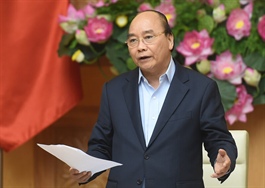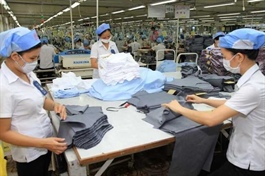Clarity crucial on investment sources for airport upgrades: experts
Clarity crucial on investment sources for airport upgrades: experts
Experts are concerned about clarity on funding sources and costs for the VND365.1 trillion ($15.7 billion) that Vietnam needs to build and upgrade airports by 2030.
An aircraft is seen at Noi Bai International Airport in Hanoi. Photo by Shutterstock/Maksim Semin.
|
Tran Quang Chau, deputy chairman of the Vietnam Association on Aviation Science and Technology (VAAST), said at a recent forum that a draft plan on infrastructure development in the next decade lacks specifics on how capital will be sourced from private investors and who will be its main source.
"Many localities have proposed airports thinking the state’s coffers will cover investment. We need to communicate clearly that private funds will be the major source," he said.
The government needs to build a win-win investment mechanism for private investors to attract them into these projects, he added.
Chau was referring to a draft plan to develop the country’s aviation infrastructure for the 2021-2030 period, with vision until 2050, which envisions 26 airports by 2030, up from the current 22.
Funding for the airports are set to come from state’s coffers, Official Development Assistance (ODA) loans, banks, private companies under the public-private partnership model and provincial funds.
Tran Kim Chung, deputy head of the Central Institute for Economic Management (CIEM), said that the big price tag requires large investments from non-government funds, and authorities need to clarify the source and costs.
Other experts also expressed concerns about the profitability of the new airports.
Dang Huy Dong, former Deputy Minister of Planning and Investment, said that many small airports are reporting losses, and their operations are covered for by profits made by big airports in Hanoi, Ho Chi Minh City and Da Nang City.
The profitability of airports therefore needs to be reviewed, and ODA loans should not be used as interest rates are high, he said.
Another factor is the development of other transport infrastructure such as railways and roads. When these structures are upgraded in the future, passengers will prefer them over flights for short distances, he said.
"For distances under 300 kilometers, we need to consider how aviation will be able to compete with railways in the future," he added.
Pham Bich San, an expert in infrastructure development, said that operating costs need to be taken into account when building an airport, and municipal authorities often overlook these expenses.
Only key airports with potential to make profits should be invested in the next decade, along with a network of roads connected to them, he said.


























